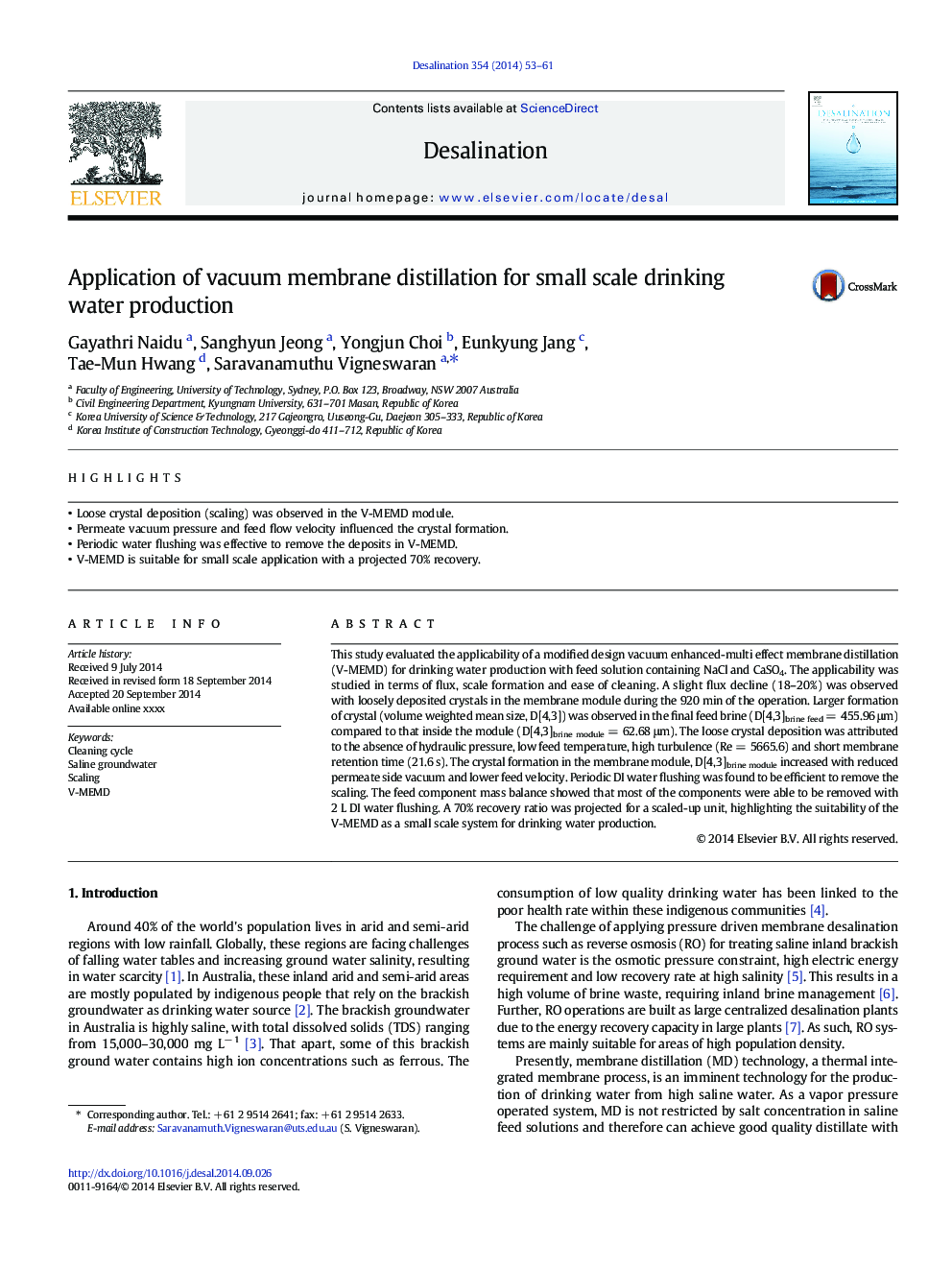| Article ID | Journal | Published Year | Pages | File Type |
|---|---|---|---|---|
| 623386 | Desalination | 2014 | 9 Pages |
Abstract
This study evaluated the applicability of a modified design vacuum enhanced-multi effect membrane distillation (V-MEMD) for drinking water production with feed solution containing NaCl and CaSO4. The applicability was studied in terms of flux, scale formation and ease of cleaning. A slight flux decline (18-20%) was observed with loosely deposited crystals in the membrane module during the 920 min of the operation. Larger formation of crystal (volume weighted mean size, D[4,3]) was observed in the final feed brine (D[4,3]brine feed = 455.96 μm) compared to that inside the module (D[4,3]brine module = 62.68 μm). The loose crystal deposition was attributed to the absence of hydraulic pressure, low feed temperature, high turbulence (Re = 5665.6) and short membrane retention time (21.6 s). The crystal formation in the membrane module, D[4,3]brine module increased with reduced permeate side vacuum and lower feed velocity. Periodic DI water flushing was found to be efficient to remove the scaling. The feed component mass balance showed that most of the components were able to be removed with 2 L DI water flushing. A 70% recovery ratio was projected for a scaled-up unit, highlighting the suitability of the V-MEMD as a small scale system for drinking water production.
Keywords
Related Topics
Physical Sciences and Engineering
Chemical Engineering
Filtration and Separation
Authors
Gayathri Naidu, Sanghyun Jeong, Yongjun Choi, Eunkyung Jang, Tae-Mun Hwang, Saravanamuthu Vigneswaran,
